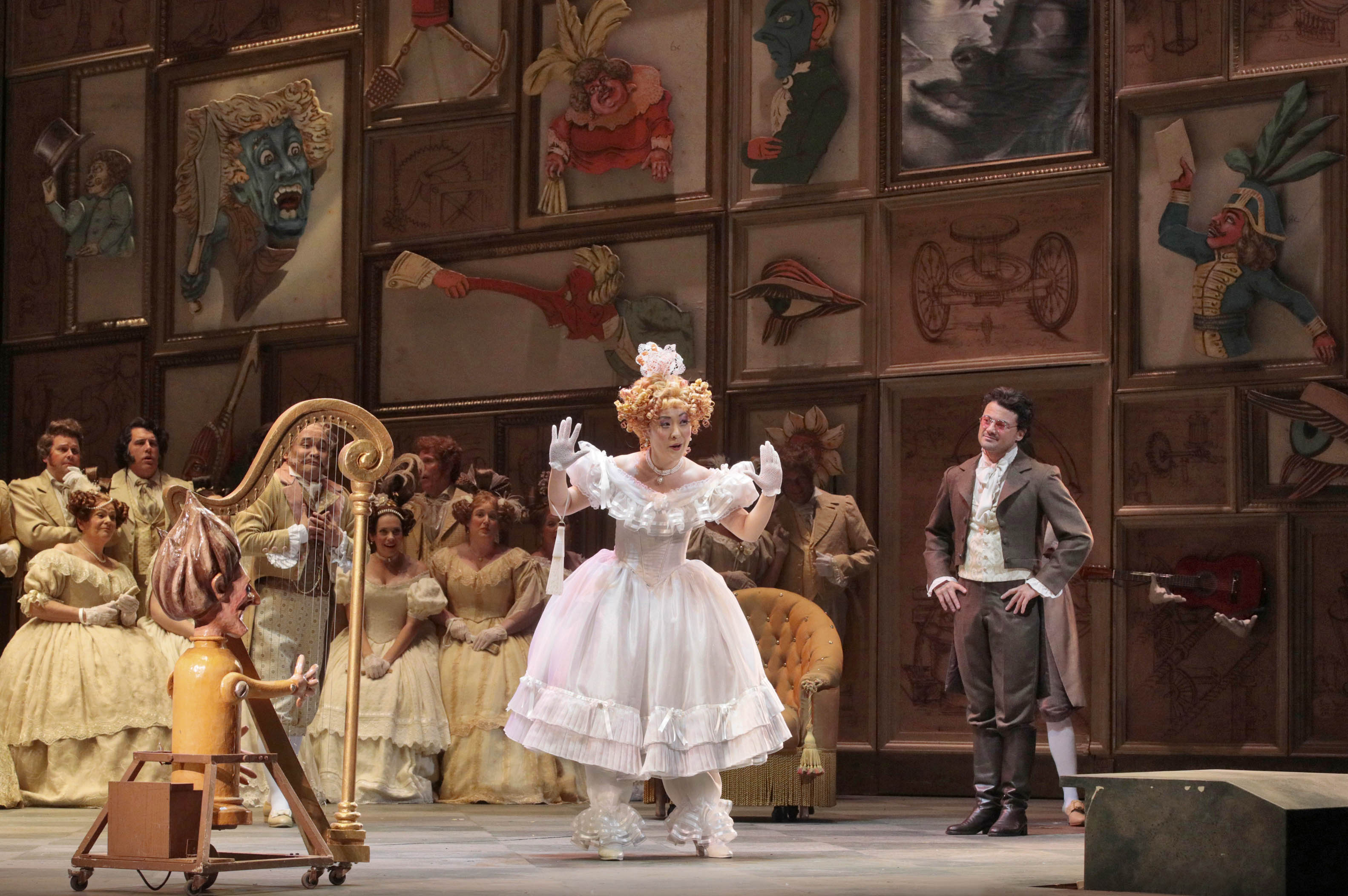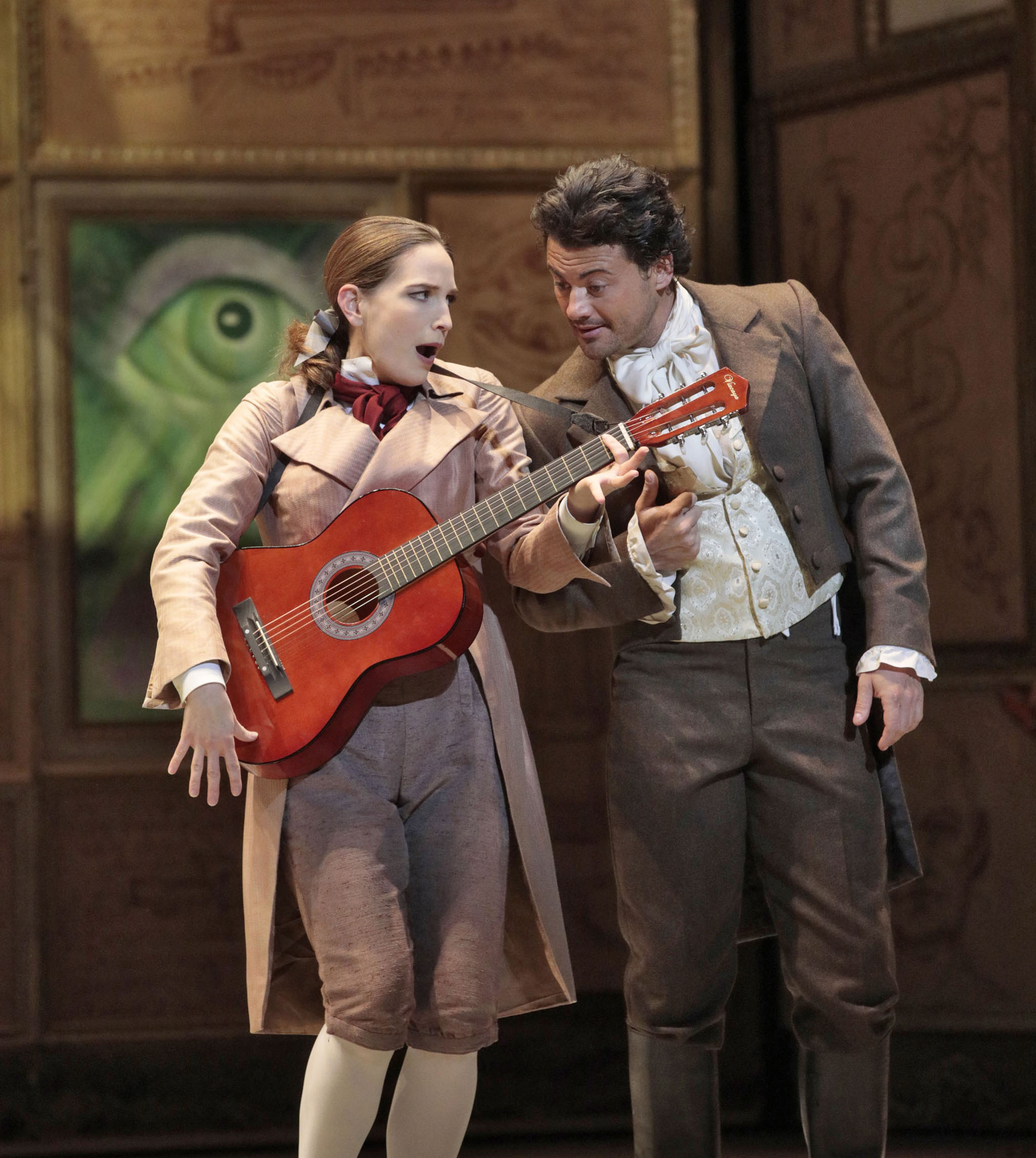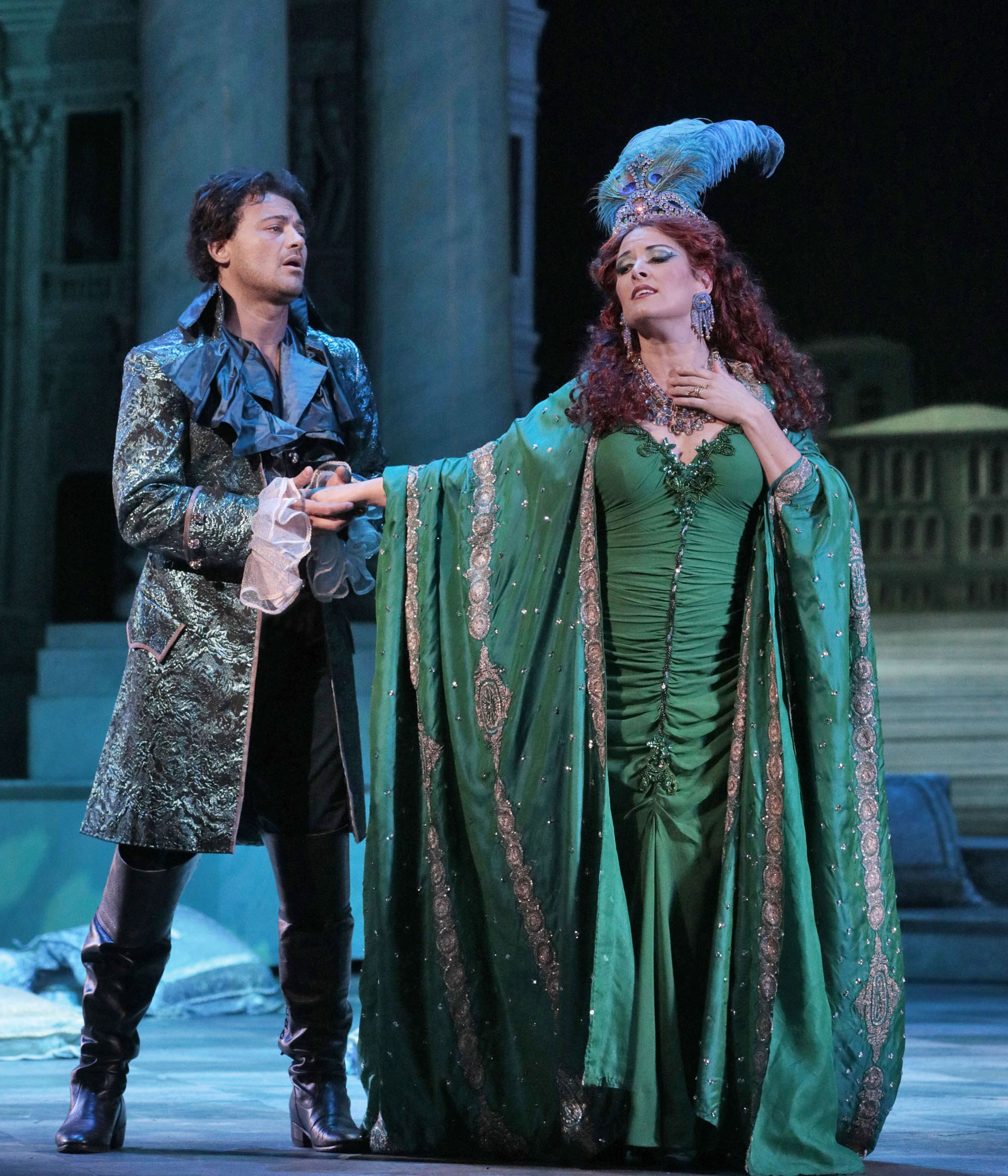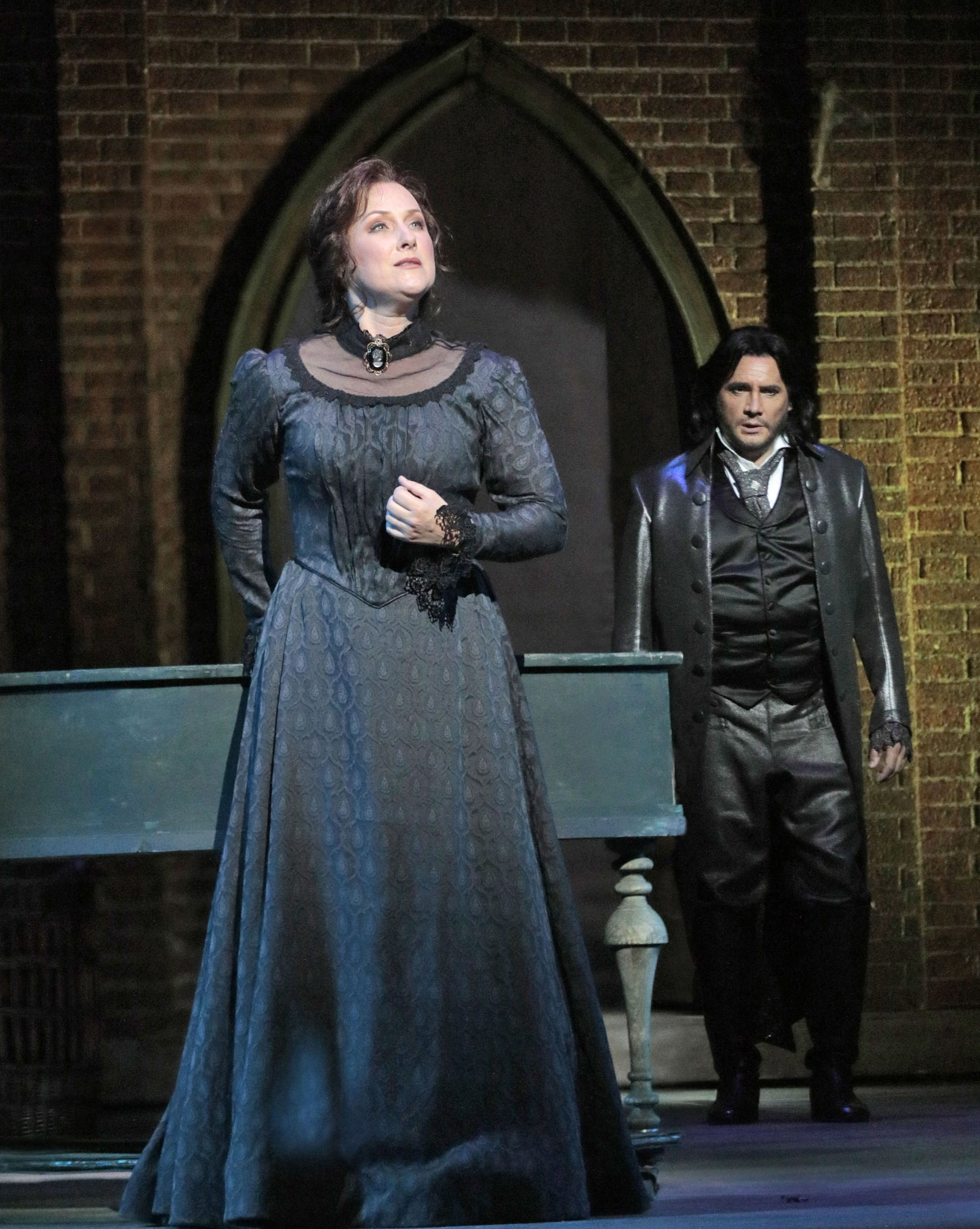Now playing at Los Angeles Music Center, a revival of the 2002 LA Opera co-production of Les Contes d’Hoffman (The Tales of Hoffmann), an opéra fantastique by Jacques Offenbach, first performed at Paris Opéra-Comique on 10 February 1881, 4 months after the composer’s death (October 5, 1880).

Conductor and Creative Director Placido Domingo (who had performed Hoffmann at LA Opera in 1988 opposite mezzo-soprano Julia Migenes singing all 4 female roles) describes it as “a poet’s unending search for true and lasting love.” His wife Marta Domingo directs.
The Tales of Hoffmann were also told in a 1951 British movie version in Technicolor with Moira Shearer as Stella/Olympia.
Jacob Offenbach was born in Cologne, Germany (then part of the Prussian empire) on June 20, 1819, the son of a synagogue cantor. He became an accomplished cellist and composer of many popular one-act operettas, that he staged in his own small theater in Paris. Gioachino Rossini called him “the Mozart of the Champs-Elysées.” His first full-length work was Orphée aux enfers (Orpheus in the Underworld, 1858) with its famous can-can “Infernal Galop.” He was granted French citizenship by Napoleon III in 1860. His satirical and irreverent operettas were also performed in Vienna and London. Suffering from gout, and aware that his days were numbered, Offenbach wanted to compose a “serious” opera; he chose a French play based on short stories by Prussian author E.T.A. (Ernst Theodore Amadeus) Hoffmann. He started in 1877, completed the vocal score but not the orchestration.

The autobiographical story of Hoffmann’s own doomed love affairs, the opera starts with a Prologue in Luther’s tavern in Nuremberg, Germany, where our hero (Italian tenor Vittorio Grigolo) drinks with his friends, while his love, La Stella, an Italian soprano from Milano, sings Mozart’s opera Don Giovanni (1787) nextdoor. At his side is his Muse, the Greek goddess of inspiration, disguised as a man, Niklausse (American mezzo-soprano Kate Lindsay), Hoffmann’s best friend, the voice of common sense. Lindorf, his rival for Stella’s love, devilish and cunning, will return under different names in the three Tales (Coppelius, Dappertutto, Dr. Miracle) to disrupt his love affairs. Handsome French bass-baritone Nicolas Testé sings all 4 villain roles with gusto.
Act One: Hoffmann’s love for Spallanzani’s daughter and his creation, Olympia (American soprano Liv Redpath), a mechanical doll.
Act Two: Hoffmann is seduced by Venice courtesan Giulietta (American mezzo-soprano Kate Aldrich) who steals his reflection to get a diamond from Dappertutto, who sings the aria “Scintille, diamant,” often placed here instead of “Tourne, tourne miroir” from Offenbach’s opéra féeire (opera-ballet based on fairy tales) Le voyage dans la lune (A Trip to the Moon, 1875).

Act Three: Antonia was sent away from Berlin to Munich by her father, so she wouldn’t marry Hoffmann. Her mother was an opera singer who died of consumption, and she is also ill and risks death if she sings. Says German soprano Diana Damrau, who sings Antonia and Stella and is married to Testé: “She is the artist, has passion for her singing. She is more similar to Hoffmann than all the other women he meets.”
Epilogue: Prima donna Stella enters the tavern, finds Hoffman passed out, leaves with Lindorf. The Muse of Poetry embraces the hero singing “The lover dies, the poet finds new form, and thus reborn, lives on.”
Moral of the story: art is more powerful than love for an artist.

I had been very impressed by Vittorio Grigolo, when I had seen him perform a recital at the Broad Stage two years ago (February 11, 2015). You can see him there on April 18 with Italian soprano Carmen Giattanasio. Contrary to often obese opera singers, the dashing Vittorio ran around the stage like Mick Jagger does, he threw himself on the floor, spoke to the audience in good English, was irresistibly charming. His sings in Italian, French and Spanish, performs Italian popular songs, like “Chitarra romana” and “Arrivederci, Roma,” (watch video) as well as opera, like many tenors from Enrico Caruso (1873-1921) to Andrea Bocelli have done.
Grigolo did not disappoint as Hoffmann when I saw the opera on April 6. In the Prologue he pranced around on bent knees imitating the hunchbacked dwarf while singing the “Ballad of Kleinzach.” Throughout he was utterly convincing as the romantic hero in love with these four women (five if you count the Muse), expressing his passion physically and well as musically.

Vittorio Grigolo (born February 19, 1977 in Arezzo, Tuscany, raised in Roma, Italy) started singing as a child in the Sistine Chapel Choir, like Beniamino Gigli, he sang with Luciano Pavarotti in Giacomo Puccini’s Tosca (1900) and was nicknamed Pavarottino (little Pavarotti), at 18 he joined the Vienna Opera Company, at 23 he made his debut at La Scala in Milano. In his repertoire are Rodrigo in La Bohème (1896) by Giacomo Puccini’s, the Duke of Mantua in Rigoletto (1985) and Alfredo in La traviata (1853) by Giuseppe Verdi, Nemorino in L’Elisir d’amore (1832) and Edgardo in Lucia di Lammermoor (1835) by Gaetano Donizetti, Faust in the 1859 French opera by Charles Gounod, Chevalier des Grieux in Manon (1884) by Jules Massénet.
On New Year’s Eve 2016 Grigolo performed with Damrau Roméo et Juliette (1859) by Charles Gounot at the Metropolitan Opera in New York, climbing the balcony effortlessly and throwing his lover to the ground in a passionate embrace. Watch video.
The Italian tenor is a lover of women in real life as well. He was married twice, divorced his second wife Iranian-born Roshi in 2013 after 7 years of marriage.
Don’t miss his last performance in Tales of Hoffmann at LA Opera on April 15.
